… without shame or concern for etymology: 11 September in Thomas Pynchon’s Bleeding Edge
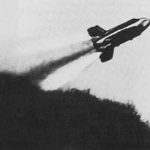
In “…without shame or concern for etymology,” Hanjo Berressem discusses Pynchon's Bleeding Edge in the context of post-9/11 fiction. In contrast to narratives of post-traumatic melancholy, Berressem argues that Bleeding Edge is a “Jeremiad about the fall and the sins of America.” The result is an essay that makes a powerful case for Pynchon as a prophetic, if brutal, witness to American society turning towards security and control in the shadow of tragedy.
Countdown
Pynchon’s 1973 novel Gravity’s Rainbow, most of which is set in the German ‘Zone’ during and shortly after WW2, is pervaded by references to the German poet Rainer Maria Rilke. “There is a mean poem about the Leid-Stadt, by a German man named Mr. Rilke” (644) the narrator notes; evoking the Tenth Elegy of Rilke’s Duino Elegies.
Strange, though, alas, the streets of Grief-City,
where, in the artificiality of a drowned-out false
stillness, the statue cast from the mould of emptiness bravely
swaggers: the gilded noise, the flawed memorial.
O, how an Angel would utterly trample their market of solace,
bounded by the Church, bought ready for use:
The “Leid-Stadt” is set against the “Raketen-Stadt,” the “Mittelwerke” where the V-2s are assembled.
Many Rilkean references center on Oberst Weissmann; “a Wandervogel in the mountains of Pain” (99) whose mother gave him, when he is ordered to South-West Africa in 1923, Rilke’s newly published Duino Elegies as a present:
Und nicht einmal sein Schritt klingt aus dem tonlosen Los … Of all Rilke’s poetry it’s the Tenth Elegy he most loves, can feel the bitter lager of Yearning begin to prickle behind eyes and sinuses at remembering any passage of … the newly-dead youth, embracing his Lament, his last link, leaving now even her marginally human touch forever, climbing all alone, terminally alone, up and into the mountains of primal Pain, with the wildly alien constellation overhead… And not once does his step ring from the soundless Destiny…. It’s he, Blicero [the code-name for “Weissmann,” H.B.], who climbs the mountain, has been so climbing for nearly 20 years, since long before he embraced the Reich’s flame, since Südwest…alone. (98)
Weissman’s Rilkezation is part of Pynchon’s staging of the tragic amalgamation of romanticism and rationality in the German soul. The coupling of a holy desire for metaphysics with the unholy desire for rationalization, control and destruction is figured by the twofold destination of the rocket as both metaphysical rocket and destructive projectile, as shown in the description of the bombing of Lübeck on Palm Sunday. “[H]ere was the Angel: ice crystals swept hissing away from the back edges of wings perilously deep, opening as they were moved into a new white abyss…” (151). “Idealism is no good,” Pynchon once noted, “a concrete dedication to an abstract condition results in unpleasant things like wars.”1
In Africa’s Kalahari desert, Weissman starts a sexual relation with a young Herero boy who will, during and after the war, roam the German Zone as part of the mysterious “Schwarzkommando.” Weissman, “in some sentimental overflow, some precognition, gave his African boy the name ‘Enzian,’ after Rilke’s mountainside gentian of Nordic colors, brought down like a pure word into the valleys” (101). Galina, the lover of Enzian’s half-brother Tchitcherine, considers Enzian to be pure Rilke: “These tall, these star-blotting Moslem angels… O, wie spurlos zerträte ein Engel ihnen den Trostmarkt … He is constant back there, westward, the African half-brother and his poetry books furrowed and sown with Teutonic lettering burntwood black” (341). No wonder that Enzian’s dreams are “dreams of the Tenth Elegy angel coming, wingbeats already at the edges of waking, coming to trample spoorless the white marketplace of his own exile” (341).2
Pynchon’s positioning of Rilke deep into the German soul is indeed “striking” on the background that a German ground-air rocket, developed by a German engineer with the eminently Pynchonian name “Dr. Wurster,” whose development was discontinued in 1945, was called the “Enzian” (Enzian 1-4).
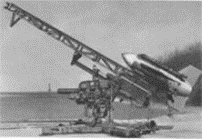
Lift-Off
There is reason to believe, then, that in the famous first sentence of Gravity’s Rainbow, “A screaming comes across the sky,” one can hear echoes of the first lines of the Duino Elegies.
Who, if I cried out, would hear me among the angels’
hierarchies? and even if one of them pressed me
suddenly against his heart: I would be consumed
in that overwhelming existence. For beauty is nothing
but the beginning of terror, which we still are just able to
endure, and we are so awed because it serenely disdains
to annihilate us. Every angel is terrifying.
The direct reference of Pynchon’s opening sentence are the German V-2 rockets [Vergeltungswaffe 2] that rain death onto London during the war; 517 times. If these rockets had been not been V-2s but further developed versions of the “Enzian,” it would have been, quite literally, Rilke descending onto London. The rocket as angel. The angel as projectile.
For Pynchon, the terrible irony of Germany’s newest technology of destruction is that if you hear the sound of the V-2, you have not been killed by it. Because it flies at supersonic speed, it comes unannounced. Silence, soundless, then sudden death. Only after that silent destruction, there is, for the survivors, the crying of its approach that bleeds, acoustically, into the sound of its detonation.
The logic of 9/11 could be described in a similar way, and, had it been written after 2001, “a screaming comes across the sky” could well be a description of the approach of the two planes flying into the towers of the WTC on the 11th of September. Two horrible, terrifying angels, made of shiny aluminum, appear in a sky that has mostly been described as steel-blue or azure.
Although the planes are not supersonic, the attack strikes America completely unannounced, and thus with the greatest possible traumatic force. The fact that there are fetishists who comb through the 9/11 footage for the sound of the impact, and who hear in the explosion secret messages in the same, desperate way that others have seen the face of Bin Laden or Satan in the smoke, is due to the long shadow of that traumatization.
Phase 1
Some of America’s leading writers have “visited” Ground Zero immediately after the event, bringing back from the destruction, the debris and the waves of pain that permeate, spectrally, the steel ruins that reached into the sky like the ruins of gothic cathedrals, narratives in which Ground Zero functions as an infinitely dense traumatic moment. In the case of Don DeLillo this is first, in December 2001, a newspaper article for Harper’s Magazine called “In the ruins of the future.”
The event itself has no purchase on the mercies of analogy or simile. We have to take the shock and horror as it is. But living language is not diminished. The writer wants to understand what this day has done to us. Is it too soon?
Programmatically, and despite the rhetorical character of the question, DeLillo sets himself against Theodor W. Adorno’s verdict about the impossibility of literature after Auschwitz; a verdict that cannot survive in the media-saturated world of 2001. Like many others, in fact, DeLillo does not seem to feel so much a reluctance to write about Ground Zero but rather an unspoken ethical obligation to write in order to honor the victims of the attack.
The writer begins in the towers, trying to imagine the moment, desperately. Before politics, before history and religion, there is the primal terror. People falling from the towers hand in hand. This is part of the counternarrative, hands and spirits joining, human beauty in the crush of meshed steel.
In prose that is pervaded by the not only seismic shock and trembling of the event, DeLillo describes moments of awe-inspiring, sublime, terrible beauty: “In its desertion of every basis for comparison, the event asserts its singularity. There is something empty in the sky. The writer tries to give memory, tenderness and meaning to all that howling space.” To give meaning to the event is also what the protagonist of Don DeLillo’s novel Falling Man (2007) who, in the beginning of the novel, stumbles in a state of existential stupor out of the death-drenched wall of dust that rolls apocalyptically through the streets, tries to do.
In both article and novel, DeLillo searches for an appropriate, restrained and careful prose in which to describe the unbearable, desolate images of 9/11; a prose that feels itself into the new, post 9/11 era: “It was not a street anymore but a world, a time and space of falling ash and near night. […] The roar was still in the air, the buckling rumble of the fall. This was the world now. […] He wore a suit and carried a briefcase. There was glass in his hair and face, marbled balls of blood and light” (3). The text’s traumatic punctum is a white shirt that floats, with deadly grace, through the thermals of the parching air.
There was something else then, outside of this, not belonging to this, aloft. He watched it coming down. A shirt came down out of the high smoke, a shirt lifted and drifting in the scant light and then falling again, down toward the river (4).
The reference in “falling” is of course in the first place to the towers, but then also to the famous photograph of the anonymous “falling man” that provides the novel with its title and whose description DeLillo channels through the consciousness of one of the characters:
The man headlong, the towers behind him. The mass of towers filled the frame of the picture. The man falling, the towers contiguous, she thought, behind him. The enormous soaring lines, the vertical column stripes. The man with blood on his shirt, she thought, or burn marks, and the effect of the columns behind him, the composition, she thought, darker stripes for the nearer tower, the north, lighter for the other, and the mass, the immensity of it, and the man set almost precisely between the rows of darker and lighter stripes. Headlong, free fall, she thought, and this picture burned a hole in her mind and heart, dear God, he was a falling angel and his beauty was horrible. (221-2, my emphasis)
DeLillo stakes the figure’s poise in the face of certain death against the formless, gaping chaos of the overwhelming destruction; a poise that is evoked by the symmetry of the photograph and is, at least partly, a result of the arrest of movement in the photographic image.
In a loop that recapitulates the logic of trauma, the novel ends at the infinitesimal moment before the first plane hits the North Tower. In the beginning of the novel, the protagonist emerges from the ruins, at the end the plane’s aluminum nose hits the glass of the tower’s facade and the protagonist is shown as he escapes from the burning building. The both temporal and logical loop is closed when the protagonist sees ‘once more’ the shirt that floats “down out of the sky. He walked and saw it fall, arms waving like nothing in this life” (246). In the “impossible” time between these two moments, the text circulates around the unspeakable, lost, unimaginable traumatic moment of the destruction of the towers. Like the performance artist who appears in the reality of New York space like a traumatic reenactment in the communal nightmares of America, DeLillo’s novel both commemorates and restages the ‘loss’ of the traumatic event.
Although DeLillo goes back into the past, in particular to the German terrorists of the 1970s, he does not provide the historical depth of Jonathan Safran Foer’s novel Extremely Loud and Incredibly Close (2005). The novel’s traumatic arc, which spans from the Holocaust to Ground Zero, is kept in a painful tension and stress by the protagonist Oscar, who is a reincarnation of Oskar Matzerath; the protagonist of Günter Grass’s novel The Tin Drum. Foer transposes Oskar’s screams into Oscar’s silences; in particular his inexplicable inability to answer his father’s phone call from the burning World Trade Center. The ending of the novel is, as so often in Jewish-American writing, almost hopeful. By way of a flicker-book effect, the falling victims float back up into the sky. As with DeLillo’s angel, it seems that the eminently ambiguous ending of Rilke’s Tenth Elegy were to pervade Foer’s ending:
And we, who always think
of happiness as rising feel the emotion
that almost overwhelms us
whenever a happy thing falls.
Almost. Jay McInerney’s novel The Good Life (2006) tells the Aristotelian love-story of two of the helpers at Ground Zero, who feel that the terrible tragedy has opened up the possibility of re-arranging their horribly habitual lives which McInerney describes before the backdrop of the experience of overpowering, senseless death. It does not take long, however, before habit creeps back into the highly eroticized potentialities of this new life. The desperately intensified libido that is set free by the massive presence of death is lost in the gradual return to normality.
Phase 2
Although they all treat 9/11 from a different angle, the novels that I have discussed until now can all be read on the foil of trauma and traumatization. From the early taboo of artistic and political responses – such as the scandal surrounding Eric Fischl’s statue “Tumbling Woman” or the “outlandish,” suicidal logic of Jean Baudrillard – to Foer’s healing by flicker-book and DeLillos “healing by poker.”
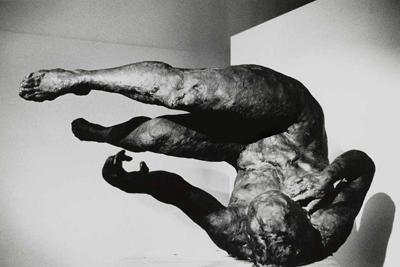
A second ‘phase’ of the literary negotiation of 9/11 – a phase defined in poetological and traumatological terms rather than in strictly chronological ones – is oriented less locally around Ground Zero, has a more ‘distanced’ relation to 9/11 and relates the attack more directly to questions of artistic creation. Although its structural matrix is still the traumatic logic, William Gibson’s novel Pattern Recognition (2003) for instance, describes the quest to trace back sequences of images – or are they fragments of a film? – that have appeared in the Internet to their anonymous creator; “some guerilla creator out there alone in the night of the Internet” (47). Gibson relates the attempt to explain the inexplicable to the assassination of J. F. Kennedy and its representation in the famous Zapruder movie.
The one hundred and thirty-four previously discovered fragments, having been endlessly collated, broken down, reassembled, by whole armies of the most fanatical investigators, have yielded no period and no particular narrative direction. Zaprudered into surreal dimensions of purest speculation, ghost-narratives have emerged and taken on shadowy but determined lives of their own. (24)
Cayce Pollard, the novel’s protagonist, has lost her father in 9/11. This loss and the resulting pain relates her to the artist, Nora Volkova, who has survived a bombing attack in which her parents died. As Cayce writes to the artist, “[m]y father disappeared on September 11th, 2001, in New York, but we haven’t been able to prove he was killed in the attack. I began to follow the footage you’ve been…” (254). To which Nora responds, “I am in Moscow. I also have lost my father in a bomb. My mother too” (260).
A fragment of the bomb, which the doctors have been unable to extract, is still stuck in Nora’s brain, where it causes a subcutaneous traumatic fault-line. Her face looks like that of her twin-sister Stella, but it is tectonically skewed: “It is Stella’s face, but some fault bisects it vertically, not quite evenly. There are no scars, only this skewing of the bone beneath” (304). In a complex artistic process, Nora has compressed her traumatic experience from a flood of images into one single still: “Three months, she recut. Five operations in that time, and still she worked. I watched it grow shorter, her film. In the end, she had reduced it to a single frame […] A bird. In flight. Not even in focus. Its wings, against gray cloud. […] She went inside, after that” (288). This still, almost abstract image is the artistic expression of the lost traumatic moment; a sliver of pain in the vastness of the Internet: “Only the wound, speaking wordlessly in the dark” (305). It is only after she has been provided with a way to work with and cinematographically manipulate images provided by one of the hospital’s surveillance cameras that she starts to assemble, from that found footage, the snippets that are disseminated in the internet.
Cayce has experienced 9/11 only indirectly. While the mega-event plays itself out, she witnesses a micro-event that is almost a “visual haiku.”
Cayce herself had been in SoHo that morning, at the time of the impact of the first plane, and had witnessed a micro-event […] She had watched a single petal fall, from a dead rose, in the tiny display window of an eccentric Spring Street dealer in antiques […] She had just heard a plane, incredibly loud and she’s assumed, low. She thought she’d glimpsed something over West Broadway, but then it had been gone. They must be making a film […] the fall of the petal, and somewhere a crash, taken perhaps as some impact of large trucks, one of those unexplained events in the sonic backdrop of lower Manhattan. Leaving her sole witness to this minute fall. (135)3
Although the traumatic logic is still operative, it is less important than the experience of the fall of the petal. After watching the petal fall,
Cayce and the German designer will watch the towers burn, and eventually fall, and though she will know she must have seen people jumping, falling, there will be no memory of it.
It will be like watching one of her own dreams on television. Some vast and deeply personal insult to any ordinary notion of interiority.
An experience outside of culture. (184-5)
Even though the event is mediated by television, the falling people are erased, and contained in the narrative only obliquely as a perception Cayce is not at all sure about: The event no longer unfolds in the fall of a human being, as it did in DeLillo and Foer, but in the moment of the fall of the petal of a flower: “[S]he closes her eyes and sees the dry petal falling. The loneliness of objects. Their secret lives. Like seeing something move in a Cornell box” (136).
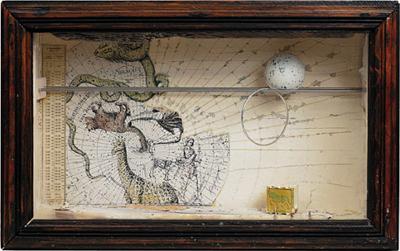
In Gibson, the description and cultural analysis of the attack is no longer put center-stage. Symptomatically, for Cayce, it will be contained in the minute geometric displacement of the fall of the petal and in the aesthetic parameters of a singular color shown on television. “[W]hat she will retain is that the exploding fuel burns with a tinge of green that she will never hear or see described” (137). When DeLillo had found the towers in a still-life by Giorgio Morandi, that moment had still followed the traumatic logic of a return of the repressed that happens belatedly and caused by a “random” trigger that brings the event back by way of an involuntary memory.
The painting in question showed seven or eight objects, the taller ones set against a brushy slate background. The other items were huddled boxes and biscuit tins, grouped before a darker background. The full array, in unfixed perspective and mostly muted colors, carried an odd spare power […] Two of the taller items were dark and somber, with smoky marks and smudges, and one of them was partly concealed by a long-necked bottle. The bottle was a bottle, white. The two dark objects, too obscure to name, were the things that Martin was referring to. “What do you see?” he said. She saw what he saw. She saw the towers. (49)
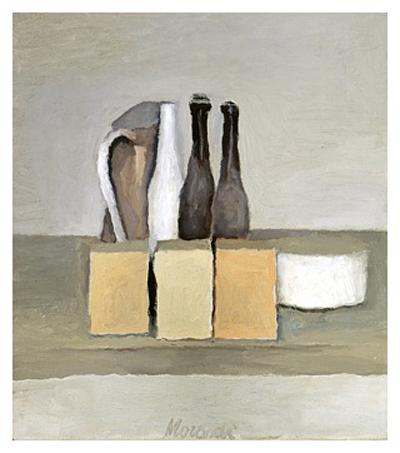
“Night over France, and a giant shadow, a monstrous backdrop, is forming itself in the sky as the 747 approaches 17.000 feet, climbing to cruise altitude” (438). The passage comes from Bret Easton Ellis’ novel Glamorama (1998), which is set around the year 1990. Although it was published three years before 9/11, the novel addresses 9/11 as an event still “having to happen.” The echo avant-la-lettre of 9/11 is the failed attempt to blow up the WTC on February 26th, 1993. The center of the novel, however, is an even earlier event. In the evening of the 21st of December 1988, Pan Am Flight 103 crashes, on its way from Frankfurt to New York, in Lockerbie. In centering the novel around this crash, Ellis returns to the first event that was experienced as what is today called an international terrorist attack.
In a very convoluted montage of levels of reality, in which it is never clear what is reality, what is film and what is film within film, the novel describes the glamorous life of a number of mostly male American models, who work, secretly, as terrorists and who cause, at the end of the novel, the crash of an airplane. As this airplane carries a cargo of party confetti and gold glitter, the trees at the site of the crash, with their “macabre tinsel” (441) of “body parts” (441) are transformed into monstrous Christmas trees. Party time.
In a curious temporal loop, the confetti that explode over the site of the crash literally floats back into the past where it settles on the earlier pages of the narration that will lead toward the crash. Almost imperceptibly, the narration fills up with inexplicable specks of confetti that become legible, in retrospect, as messengers of death and of terror. Confetti everywhere. The ending causes the beginning. The final explosion of confetti at the site of the crash is a coincidentia oppositorum of celebration and conspiracy, of party and death, of Christmas and terror, of glamour and war, of fashion and Semtex. Told in complete immediacy and an almost hallucinatory clarity.
Glamorama is important in that the terror comes, for the first time, from the heartland of America. In his next novel, the faux autobiography Lunar Park (2005), “Ellis” has moved from Manhattan into the suburban idyll. Again in a quite hallucinatory, or better ghostly prose, Ellis samples a dystopian vision of a post 9|11 America into the American present: “there were so many freak horrors – the dirty bomb in Florida, the hijackers who killed the sky-marshals” (298). The treatment of the topic is as ambivalent as the whole novel. In the aftermath of the attack, American reality has morphed into a surreal montage of Beirut, Baghdad and New York.
In any large city […] suicide bombers were blowing themselves up in crowded Burger Kings and Starbucks and Wal-Marts and in subways at rush hour. Miles of major cities had been cordoned off behind barbed wire, and morning newspapers ran aerial photographs of bombed-out buildings on the front page, showing tangled bodies in the shadow of the crane lifting slabs of scorched concrete. More and more often there were “no survivors.” Bulletproof vests were on sale everywhere, because scores of snipers had suddenly appeared; the military police stationed on every corner offered no solace, and surveillance cameras proved useless. There were so many faceless enemies – from within the country and abroad – that no one was certain who we were fighting or why. Cities had become mournful places, where everyday life was suddenly interrupted by jagged mounds of steel and glass and stone, and grief on an unimaginable scale was rising up over them, reinforced by the stained, tattered photocopies of the missing posted everywhere […] people wandering around in a slow-motion daze, some wrapped in American flags, while the soundtrack was Bruce Springsteen softly singing “We Shall Overcome.” There were too many fearful moments when the living envied the dead, and people started moving away to the country, the suburbs, anywhere. […] So many people had lost their capacity for love. (28)
Like the human shrapnel that DeLillo had described in the beginning of Falling Man – microscopically small parts of the suicide bomber’s body that enter the skin of the victims where they cause inflammations – 9/11 has caused inflammations in the cultural and national skin of America.4, 16). As DeLillo had noted, “[t]he second plane coming out of that ice blue sky, this was the footage that entered the body, that seemed to run beneath her skin, the fleeting sprint that carried lives and histories, theirs and hers, everyone’s, into some other distance, out beyond the towers” (134).
Impact
Arrested in a national shell shock, America huddles around the still glowing embers of Ground Zero, blinded by the intensity of the eight megajoule of energy that were set free in the attack. The specifically American mode of dealing with trauma calls for an immediate mass of the “Church of Hollywood,” for patriotic singers and praying actors and actresses. America entangles itself into the melodramatic machineries of mourning and the social rituals of oversharing. It is flooded by a tsunami of a helpfulness that tends to run into the void and against which only Chris Rock stems himself when he notes, during the live-broadcast of the America: A Tribute to Heroes telethon that airs one week after the attack: “Whatever you do, don’t send no more candles.”5 Mourning, a national desperation, insecurity and blind anger rise from the debris of Ground Zero. Simultaneously, the machineries and protocols of othering – what Pynchon will call “ethnic toxicities“ (Bleeding 328) – and profiling are revved up to a hysterical shriek.
Like Art Spiegelman, whose In the Shadow of No Towers (2004) is a very personal monument to the attack, Pynchon is, as one of the last great American writers who thematizes 9/11, in New York at the time of the attack. Expectations are high. Bleeding Edge, published the 17th of September 2013, is set in the New York of the dot.com bubble. “It’s the first day of spring, 2001” (1), the hardly apocalyptic opening sentence of the novel notes, a novel that is structured around holidays, with the tear of 9/11 between the 4th of July and Halloween. But, as we all know, “April is the cruelest month.”
“And out in the sunlight the soaring hazy aluminum presence…” (319, 424). It is not difficult to hear another echo of Rilke’s angels in Pynchon’s description of the two descending planes. In Bleeding Edge, however, the towers of the WTC are, from the beginning, anything but “freedom towers.” To their urban surrounding, they were always a latent threat. As Horst Tarnow, the husband of Maxine Tarnow, the “fraud investigator” (324) protagonist on the novel, notes, “even when you can’t see the Trade Center towers, you can feel them, feel them, like somebody in an elevator shouldering up against you” (319). The only time their sublimity shines through the narrative is when Maxine looks at them at night from Sid’s boat, although this sublimity is immediately cancelled out by the even more impressive sublimity of the ocean: “with the World Trade Center leaning, looming brilliantly curtained in light gigantically off their port quarter, and someplace farther out in the darkness a vast unforgiving ocean” (165). Generally, however, there is an inherent coldness to the WTC, which Pynchon describes in a sentence that also provides, in the perhaps shortest and most concise way imaginable, the medial situation around the attack. The WTC “was never the Statue of Liberty […] never a Beloved American Landmark, but it was pure geometry. […] And then they blew it to pixels” (446).
Not only are the towers menacing in themselves, they seem to create a curious unity with the two planes. Horst has, because of an irrelevant reason, not gone to work in the WTC on September 11th. Maybe because he had, as a financial analyst, an extra sense for what the future holds in store. But, as Maxine asks him, “[h]ow could predicting market behavior be the same as predicting a terrible disaster?” Horst’s answer is programmatic. It would be possible “[i]f the two were different forms of the same thing” (320). As Shawn, Maxines Guru-Surfer-”emotherapist” (30) notes, “[t]he Trade Center towers were religious too. They stood for what this country worships above everything else, the market, always the holy fuckin market” (338). Of course all of these are the voices of specific characters, and novels are notoriously dialogic, but Pynchon has always been known for the way the narrative voice sneaks into the different voices and vibes.
The first thing that is striking about Pynchon’s description of 9/11 is its extremely hypothermic register: The plume of smoke and finely divided structural and human debris has been blowing southwest […] A bitter chemical smell of death and burning” (327). This is miles away from DeLillo’s pain-filled prose. These are bulletins from reality. What Pynchon called, in Vineland, “rude updates.” The narrator in Bleeding Edge is a relentless and ruthless realist.
As such, he has little sympathy for the American media. The people who hold out “like zombies” (321) in front of images of the catastrophe on TV are part of a “viewing population brought back to its default state, dumbstruck, undefended, scared shitless” (321). The voice-overs and commentaries that cover the images are the usual “morning-show airhead idiocy” (324). The media are official and one cannot trust the official version of the event. “No matter how the official narrative of this turns out,” one should look for the true reasons elsewhere: “not in newspapers or television but at the margins, graffiti, uncontrolled utterances, bad dreamers who sleep in public and scream in their sleep” (322). Pynchon also shows little appreciation for the necrophiliac erotics – what is also called “terror sex” – of a McInerney. “[O]f course, there have to exist losers who would actually use the tragedy unfolding downtown to get laid on the cheap” (318), someone notes with more than an edge of contempt.
In Bleeding Edge the narratives of traumatization and heroic action that have defined both the official narratives and most of the literary responses to 9/11, are seen as nothing but diversions and distractions. They are cover-ups for a number of political and cultural re-wirings, one of which is the assassination of irony that had already been mentioned in Ellis. On the 18th of September 2001, Graydon Carter, the publisher of Vanity Fair talks, utterly unironically, about “the end of the age of irony.” On the 24th of September Roger Rosenblatt chimes in:
One good thing could come from this horror: it could spell the end of the age of irony. For some 30 years - roughly as long as the Twin Towers were upright - the good folks in charge of America’s intellectual life have insisted that nothing was to be believed in or taken seriously. Nothing was real. With a giggle and a smirk, our chattering classes - our columnists and pop culture makers - declared that detachment and personal whimsy were the necessary tools for an oh-so-cool life. Who but a slobbering bumpkin would think, “I feel your pain”?
Pynchon channels the sentiment through Maxine’s sister, who attacks Maxine’s cynicism:
Whose side are you on, are you an American or what are you […] this horrible, horrible tragedy, a whole generation traumatized, war with the Arab world any minute, and even this isn’t safe from your stupid little hipster irony? What’s next? Auschwitz jokes? (324)
Now, Pynchon has always been good for bad jokes, and the attack on irony as a “collateral casualty of 11 September” (335) stands emblematically for the deadly serious political pose that rises from the ashes of 9/11: In Bleeding Edge, after 9/11 novels are no longer taught at school. The pupils have to watch films secretly, because they are afraid of teachers who have suddenly gotten serious.
Already in Mason & Dixon Pynchon had lamented that the factual wins out over the fictional by way of the relentless measuring and colonization of the America: “for as long as its Distance from the Post Mark’d West remains unmeasur’d, nor is yet recorded as Fact, may it remain, a-shimmer, among the final Pages of its Life as Fiction” (650). The uncharted America serves as “a Rubbish-Tip for subjunctive Hopes, for all that may yet be true” (345). It is the free, not-yet-colonized Continent, safe
till the next Territory to the West be seen and recorded, measur’d and tied in, back into the Net-Work of Points already known, that slowly triangulates its Way into the Continent, changing all from subjunctive to declarative, reducing Possibilities to Simplicities that serve the ends of Governments,—winning away from the realm of the Sacred, its Borderlands one by one, and assuming them unto the bare mortal World that is our home, and our Despair. (345, emphasis added).
As in all of his work, in Bleeding Edge cartographs both the controlled spaces and the spaces that are as yet uncontrolled. In Bleeding Edge the American ‘borderlands’ are no longer real spaces, but rather the uncharted spaces of the Internet: Two likeable geeks, Justin and Lucas, have programmed “DeepArcher” (341-2), a virtual world in the deepest, not yet colonized and still market-free depths of the Internet. In 2001, however, they have reached a fork in the road. Should they sell the source code to a blog company, or make it shareware; “be rich forever or make a tarball out of it and post it around for free” (37)?
DeepArcher is a virtual space that is set apart from the “superficial” levels of the “official” Internet; “the sunlit distances of the surface world, wild country, farmland, suburbs, expressways, misted city towers” (75). Its “splash page” (359) shows the figure of “the Archer” standing in front of an abyss that figures the “potential” space of “the immeasurable uncreated” (75); a space that is filled with “a darkness pulsing with whatever light was before light was invented” (75).
As Justin notes, DeepArcher is “[w]hat’s known as bleeding-edge technology” (78) in that its architecture makes surveillance impossible: The program “forgets where it’s been, immediately, forever” (78), with “each link vanishing and relocating as soon as it’s clicked on…an invisible self-recording pathway, no chance of retracing it” (79). As such, DeepArcher is an archipelago of freedom in an ocean of recorded data; in an “indexed world” (476) whose operational motto is, as Windust notes, “[n]o keystroke left behind” (105). DeepArcher is an undeveloped virtual space, a data island, pristine, without control, state and real-estate: “unmessed-with country” (241).
Already, however, as a character called Promoman tells Maxine, “the colonizers are coming. […] There’s already a half dozen well-funded projects for designing software to crawl the Deep Web […] [S]ummer will end all too soon, once they get down here, everything’ll be suburbanized faster than you can say ‘late capitalism’ […] Anybody still wants his freedom’ll have to saddle up and head somewhere else” (241).
One of the more horrifying results of 9/11, in fact, is that its “vibrations” have allowed the “colonization of DeepArcher” (341-2). After 9/11, DeepArcher is suddenly filled of advertisements: “On walls, on the clothing and skins of crowd extras, as pop-ups out of the Invisible and into your face” (354). Somehow, shortly before 9/11, a series of “pseudorandom” (79) numbers within the program of DeepArcher that functioned as the guardians of its ungovernability have been deactivated.
So that 11 September window of vulnerability Lucas and Justin were so worried about […] has allowed not only unwelcome guests to sneak in but somebody – Gabriel Ice, the feds, fed sympathizers, other forces unknown who’ve had their eye on the site – to install a backdoor also. (355)
Time to saddle up and head somewhere else, indeed. Topographically as well as topologically, this ‘somewhere else’; is related to the myth of the Hollow Earth, which is another leitmotif in Pynchon.6 Later in the novel, when Maxine, using one of the “time-sensitive passwords” (354) that Vyrva has given her, enters DeepArcher she will find herself in a virtual spaceship manned by Lucas who has, together with Justin, “decided to go open source” (356) and to leave the compromised DeepArcher for yet another new frontier. As he tells Maxine they’re on “an expedition. Exploring” (357). The journey is modeled on an earlier journey from the time of ‘Vineland:’
When the earliest Vikings started moving into the northern oceans, there’s one story about finding this huge fuckin opening at the top of the world, this deep whirlpool that’d take you down and in, like a black hole, no way to escape. These you look at the surface Web, all that yakking, all the goods for sale, the spammers and spielers and idle fingers, all in the same desperate scramble they like to call an economy. Meantime, down here, sooner or later someplace deep, there has to be a horizon between coded and uncoded. An abyss. (357)
This abyss, figured on DeepArcher’s splash page and so eerily taken up in the 9/11 monument’s two ‘pools,’ is the ship’s ultimate destination. As another traveler on the ship tells Maxine, in a passage that evokes Pynchon’s description of the American wilderness in Mason & Dixon as an “unlined” state of undifferentiation “where quite another Presence reigns, undifferentiate, - That whichever precedes Ghostliness” (491), the course of the ship is “the edge of the unnavigable, the region of no information” (358); “a void incalculably fertile with invisible links” (359). From the infinite abyss, she tells Maxine, “[t]here’s a faint glow, after a while you notice it – some say it’s the trace, like radiation from the big bang, of the memory, in nothingness, of having once been something” (359).
Against this image of potentiality and virtual fertility, Pynchon sets the protocols of control and surveillance set in place in American reality. In fact, as the intrusion into the series of pseudorandom numbers in DeepArcher’s programming has shown, the greatest victim of 9/11 has been chance and contingency. When, on her way to work, Maxine meets an acquaintance, “[i]t seems accidental, but there may be no accidents anymore, the Patriot Act may have outlawed them along with everything else” (341).
Pynchon never answers all of the questions about the potentialities of the Internet. Maybe 9/11 can be undone in the Internet, as a pixel-land in which dead people live on as avatars: “in the Hindu religion avatar means an incarnation. So I keep wondering,” Maxine asks Justin and Lucas “when you pass from this side of the screen over into virtual reality, is that like dying and being reincarnated?” (70). With the dead living on as avatars in DeepArcher, in fact, “the Internet has become a medium of communication between the two worlds” (427) and as such promises a return:
[T]here’s something waiting out there, latent, maybe it’s geometric, maybe begging like geometry to be contradicted in some equally terrible way, maybe a sacred city all in pixels waiting to be reassembled, as if disasters could be run in reverse, the towers rise out of the black ruin, the bits and pieces and lives, no matter how finely vaporized, become whole again… (446)
In fact, on the ‘departing’ spaceship, Maxine “begins to pick up a chill sense that some of the newer passengers could be refugees from the event at the Trade Center […] bereaved survivors, perps foreign and domestic, bagmen, middlemen, paramilitary […] For those who may be genuine casualties, likenesses have been brought here by loved ones” (358). In the real world, however, there is no way to turn the tide. After the attack, police is everywhere, ships with surveillance machinery appear on the Hudson River, entrepreneurs, rip-off artists and con-men hover over Ground Zero.
At the center of the Bleeding Edge’s plot is the young dot.com entrepreneur Gabriel Ice and his possible involvement in 9/11. Most of the questions surrounding 9/11 are posed, but not answered. Why was there such heavy trading with the stock of the two airlines shortly before the attack (315; 324)? What about Reg Despard’s film that shows a stinger missile on the roof of The Deseret (265). What about the sharp-shooter on another rooftop who targets the stinger-operators (266)? What about Nick Windust, the “Special Case Officer” (98) and “federal penis” (106) who destabilizes whole nations but saves his Guatemalan wife Xiomara? Windust has been involved in the bombardment of the presidential palace during the coup in Chile – General Augusto Pinochet overthrows Salvador Allende – that was supported by the CIA. Of course Pynchon notes the date of the bombardment. It is September 11th 1973. Why does Maxine start an affair with Windust? As always in Pynchon, such questions never lead anywhere, but they set up an enigmatic and menacing mood: “Out in the vast undefined anarchism of cyberspace, among the billions of self-resonating fantasies, dark possibilities are beginning to emerge” (327). In Bleeding Edge, however, the more “byzantine” (323) paranoia is given over to the political left figured by March Kelleher.
One thing, however, is clear. There is nothing innocent in the way the event is played out and politically co-opted. Even the term Ground Zero is not innocent, as it has been hijacked by the political power to keep America under control:
“Ground Zero,” a Cold War term taken from the scenarios of nuclear war so popular in the early sixties. This was nowhere near a Soviet nuclear strike on downtown Manhattan, yet those who repeat “Ground Zero” over and over do so without shame or concern for etymology. The purpose is to get people cranked up in a certain way. Cranked up, scared, and helpless. (328)
Maybe it is for this reason that Pynchon dates the event differently. Not 9/11 or September 11th, but “11 September.”
With almost cynical satisfaction Pynchon follows the instant reversal of tragedy into control. Pynchon, who is famous for his acronyms such as the W.A.S.T.E. from The Crying of Lot 49 – We Await Silent Tristero’s Empire – must feel almost envious of the USA PATRIOT Act [Uniting and Strengthening America by Providing Appropriate Tools Required to Intercept and Obstruct Terrorism Act].
Behind this cynicism, however, one can make out the voice of a preacher in an ethical desert. Bleeding Edge is a Jeremiad about the fall and the sins of America. The Puritans, who liked to think of themselves as the inhabitants of a new Jerusalem, always had a penchant for Jeremiads. Pynchon’s text should be read on this background. Without it, in fact, it would be almost unbearable.
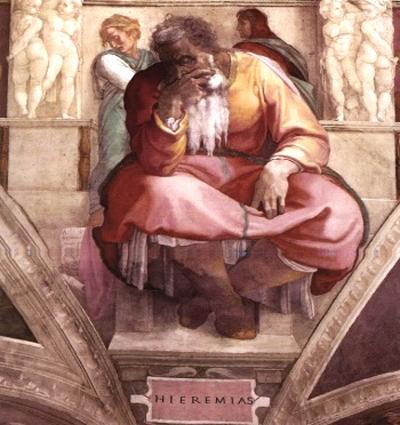
If the novel does not answer the open questions surrounding 9/11, it takes a very clear stance. To sustain this stance, Pynchon uses once again the motif of angels. Who sends Marvin, the bicycle messenger, to Maxine with deliveries of dossiers and video cassettes? As Maxine notes, “maybe Marvin is some kind of otherworldly messenger, an angel even, but what unseen forces are employing him at the moment […] Gabriel Ice?” (111). In a dream, the dead Lester Traipse tells Maxine the word “Azrael,” which, as he goes on to explain, is the name of “the Angel of Death. In Islam also, for that matter…And briefly she is back in the corridor, Gabriel Ice’s guarded mystery tunnel out in Montauk” (210), where she ran from a menacing presence; an unholy angel that awaited her in Ice’s summer retreat: a figure, “poised, vibrating” […] Something in a child-size fatigue uniform, approaching her now with weary and lethal grace, rising as if on wings, its eyes too visible in the gloom, too pale, almost white…” (194). But then there are also good forces, such as Daimos and Phobos, who sabotage one of Ice’s projects and whom Maxine therefore imagines as “avenging angels” (460).
The angelic references center around the arch-field in Bleeding Edge; Gabriel Ice. Ice is a young entrepreneur whose “computer security firm” (10) hashslingerz is as deeply involved in 9/11 as it is in the security policies of the CIA. Ice is a former computer geek who has become, somewhat like Vineland’s Brock Vond, an unscrupulous manipulator and probably murderer. On another level, however, he is much more. For Pynchon, who has always had a faible for telling names – who would be surprised that in Inherent Vice one of the bad guys is called Prussia? – Ice is the allegorical figure of a northern and cold Archangel Gabriel or also Jibra’il, because Gabriel is not only God’s messenger and translator in the Bible, but also in the Koran; an angelus interpres who helps to understand visions.

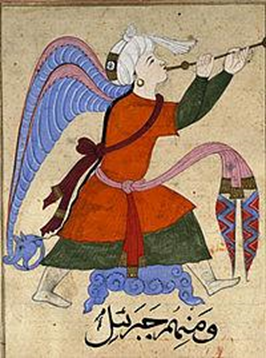
Like all angels, Gabriel is made purely of light, which might help explain why Gabriel Ice buys, after the dot.com bubble has burst, loads of old, useless and therefore cheap fiber optic cable.
In Jewish belief, Gabriel is also the “recording angel,” (Ezekiel 9:3-4) and as such the patron saint of all forms of technological media – as can be seen by Emil Berliner’s original label of the “recording angel,” soon to be eclipsed by “His Master’s Voice”7 - media tele-communication services, intelligence services (and thus the CIA), messengers (and thus also bicycle messengers such as Marvin), mailmen, post-office employees and stamp collectors, which of course evokes Pynchon’s The Crying of Lot 49.

It is not a long way from Tristero’s muted post horn to Gabriel’s trumpet, which, amongst others, announces the apocalypse, and it is, similarly, not a long way to Rilke’s angels, especially to his description of the archangel Gabriel in his poem “Mohammed’s Calling.”

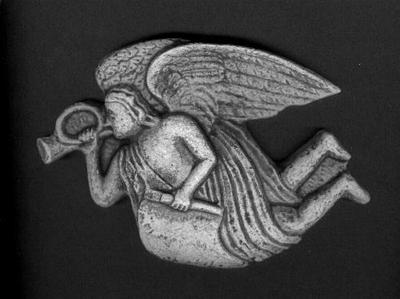
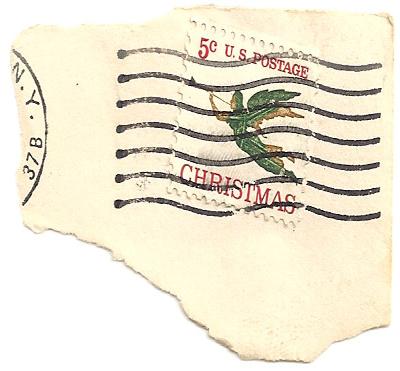
for T.W.
Power stepped into his hiding place:
at once a presence he could not mistake.
He begged the Angel—pure, erect, ablaze—
to leave him as he was. He would forsake
all his ambitions; it was best he stayed
that baffled, over-traveled man of trade.
He’d never learned his letters…and now such
a word! For wise men, even, far too much.
But no, the Angel fiercely showed and showed
the writing on its page. This will that glowed
would not back down, again demanding:—Read.
And then he did. The Angel bowed its head
before him, one from thenceforth who had read:
who knew, and carried out, and who decreed.
Gabriel, however, is not only a divine messenger. The books Enoch and Ezekiel describe him as an angel of destruction, of retribution and of death, who has, in Jewish belief, destroyed Sodom and Gommorah, and who has been sent by God to similarly destroy the faithless, apostate Jerusalem.
It is through these references that 9/11 in Bleeding Edge can be read as the realization of God’s divine punishment, and Gabriel Ice as simultaneously the executor of this punishment as well as the medium through which this punishment becomes legible.8, 10:9). Because the just God of the Old Testament is angry with his people: “Why then have these people turned away? Why does Jerusalem always turn away?” the angry God asks in Jeremiah 8.5. “They cling to deceit; they refuse to return.” In Ezekiel, the sins are defined in more detail, and it is not difficult to transpose them to contemporary America: “The people of the land have used oppression, and exercised robbery, and have vexed the poor and needy: yea, they have oppressed the stranger wrongfully” (22.29). “Should I not punish them for this?” God asks in Jeremiah 9:9. “Should I not avenge myself on such a nation as this?” A similar warning comes in Ezekiel 9.10: “So I will not look on them with pity or spare them, but I will bring down on their own heads what they have done.” In Jeremiah 4.6, the danger of retribution is clear and present. As if God was speaking directly about Gabriel Ice, Jeremiah warns his people to “[r]aise the signal to go to Zion! Flee for safety without delay! For I am bringing disaster from the north, even terrible destruction.”
For Pynchon, the North has always been the realm of death, and whiteness its color. The shroud of Imipolex G. in Gravity’s Rainbow is “gray-white, mocking, an enemy of color” (754) and Weissman is indeed “Dominus Blicero.” Enzian “found the name Bleicheröde close enough to ‘Blicker,’ the nickname the early Germans gave to Death. They saw him white: bleaching and blankness. The name was later Latinized to ‘Dominus Blicero.’ Weissmann, enchanted, took it as his SS code name” (322).9
It is not surprising, therefore, that Gabriel Ice plans to build a server farm in the arctic, because, among other things, this would be a very elegant solution to the problem of overheating. As Pynchon notes, with the project to colonize the arctic tundra, he becomes – disguised “in a capitalist party mask” (311) – part of a tradition that includes a similar project by Stalin, the “genocidal Georgian” (310-11). When one reads Gabriel Ice as a figure through which to make sense of 11 September, he is indeed, below his diabolic surface, an angelus interpres.
Pynchon would like that Jeremiah 9.11 describes precisely 9/11: “I will make Jerusalem a heap of ruins, a haunt of jackals; and I will lay waste the towns of Judah so no one can live there,” God warns the inhabitants of Jerusalem. And he is sure to give the reasons:
It is because they have forsaken my law, which I set before them; they have not obeyed me or followed my law. Instead, they have followed the stubbornness of their hearts; they have followed the Baals, as their fathers taught them. Therefore, this is what the LORD Almighty, the God of Israel, says: “See, I will make this people eat bitter food and drink poisoned water. I will scatter them among nations that neither they nor their fathers have known, and I will pursue them with the sword until I have destroyed them.” This is what the LORD Almighty says: “Consider now! Call for the wailing women to come; send for the most skillful of them. Let them come quickly and wail over us till our eyes overflow with tears and water streams from our eyelids. The sound of wailing is heard from Zion: ‘How ruined we are! How great is our shame! We must leave our land because our houses are in ruins.“ (Jeremiah 9. 14-20).
In Jeremiah 9.13 he asks “[w]hat man is wise enough to understand this? Who has been instructed by the LORD and can explain it? Why has the land been ruined and laid waste like a desert that no one can cross?” The answer used to be Jeremiah. Today, perhaps, it is Pynchon.
If one had read it as a vision from the book Jeremiah come true, 9/11 could have become a sacred site; (328) a site of the restoration of the original American values. Ground Zero “would’ve been a reset button for the city, the real-estate business, Wall Street, a chance for it all to start over clean” (387). It was used, however, to implement a control regime; to create a new, undead America and an aftermath that can be only, as Maxine notes, “analogous to death and afterdeath” (319). America could have woken up and grown up:
The day was a terrible tragedy. But it isn’t the whole story. Can’t you feel it, how everybody’s regressing? 11 September infantilized this country. It had a chance to grow up, instead it chose to default back to childhood (336).
Of course Pynchon’s Jeremiad goes into a direction that is diametrically opposed to the “official” Jeremiads one has become accustomed to hear from the religious and the political right, who have always been frighteningly successful at co-opting the genre and its spirit: televangelists who make unholy amounts of money, right-wing rhetoricians who use 11 September to implement the reign of a moral majority. All “in the name of the Lord.”
In fact, Maxine makes fun of this kind of right-wing Jeremiad in a conversation with Vyrva, who, it turns out, has been betraying Justin with Gabriel Ice – even “got in a quickie“ (363) on 9/11 – and who now feels guilty because she fears that her infidelity has somehow “caused’ the event,” a “superego logic” that Maxine relates precisely to the rhetorics of the right-wing Jeremiads: “Is this the listen-up-all-you-slackers speech? American neglect of family values brings al-Qaeda in on the airplanes and takes the Trade Center down?” (363).
Unlike these horrifyingly hypocritical Jeremiads, Pynchon’s Jeremiad goes back to the cultural values encoded in the Bible. Pynchon’s Jeremiad, in fact, is written from the position of and for the preterites, rather than a Jeremiad distorted by the greedy hands of the elect with their politics of control and their “myths of the limitless” (353). Pynchon’s approach is ethical rather than moral, but it is not even the Puritans’ so predictably double-standard sexuality, which Pynchon has never stopped deconstructing, that is the main target in Bleeding Edge. As in Inherent Vice, it is, as I noted above, the deadly sin of greed: robbery of the poor and the needy, and the wrongfully oppression of the stranger. If one were to look for an American voice with a similarly ‘holy anger’ and a similar hatred of greed, one would have, perhaps, to turn to Cormac McCarthy.
Pynchon’s preterite Jeremiad is directed against the likes of Crocker Fenway, the arch-fiend of Inherent Vice, who lives, symptomatically, in a gated community squared: “The Fenways were heavy-duty South Bay money, living on the Palos Verdes peninsula in a gated enclave located inside the already gated high-rent community of Rolling Hills” (171). Fenway is a member of a (s)elect group of people operate on “another level of power altogether” (301). In a short-circuiting of ethical and real estate registers, and using a word that is also repeatedly used in Bleeding Edge, Pynchon notes that the members of this group “seemed to feel entitled to fuck with the lives of all who weren’t as good or bright as they were, which meant everybody” (301, emphasis added).
Tracing themselves back to the first explorers, these founding fathers have a sense of entitlement that goes even beyond the sinister machinations of the caste of mere real estate agents. As Fenway notes, “Real estate, water rights, oil, cheap labor – all of that’s ours, it’s always been ours” (347). Like the elect who have hijacked the Jeremiad for their own ends, Fenway – like Giuliani in Bleeding Edge – uses quite cynically the language of ecology to implement his vision of cultural cleanliness. As he notes, it is “residential owners like me against developers like Brother Wolfmann. People with a decent respect for preserving the environment against high-density tenement scum without the first idea of how to clean up after themselves” (347). No wonder that in Bleeding Edge, an anonymous caller also talks about “Brother Windust” (394). It is a similarly anonymous caller who will, in Bleeding Edge scare Maxine away from further investigations by warning her about the safety of her kids; threatening, without any scruples, the officially most cherished of American values: the sense of family. The “government” has come to use the same threats as the Mafia.
As he did in The Crying of Lot 49, in Inherent Vice Pynchon traces the history of the possessors back to the beginning of the exploration and colonization of America. As he notes about a painting of the first expedition to California in Crocker Fenway’s club Portola: “On the face of one of them – maybe Portolá himself? There was an expression of wonder, like, What’s this, what unsuspected paradise? Did God with his finger trace out and bless this perfect little valley, intending it only for us?” (343-4). The crux, of course, is that the elect truly believe that God was “intending it only for us” and not for sharing it with the multitude of preterites; with Ezekiel’s “poor, needy strangers.”
[…] your tired, your poor,
Your huddled masses yearning to breathe free,
The wretched refuse of your teeming shore.
Send these, the homeless, tempest-tost to me,
I lift my lamp beside the golden door!
Or, in Fenway’s translation:
a swarm of transients who come and go without pause here in the sunny Southland, eager to be bought off with a car of a certain make, model and year, a blonde in a bikini, thirty seconds on some excuse for a wave […] We will never run out of you people. The supply is inexhaustible. (IV 347)
As Pynchon had noted in Gravity’s Rainbow in reference to William Slothrop’s attempt to implement a logic of preterition, “[c]ould he have been the fork in the road America never took, the singular point she jumped the wrong way from?” (556). In this context, the site of 9/11 is indeed a miniature “Zone.”
It seems to Tyrone Slothrop that there might be a route back—maybe that anarchist he met in Zürich was right, maybe for a little while all the fences are down, one road as good as another, the whole space of the Zone cleared, depolarized, and somewhere inside the waste of it a single set of coordinates from which to proceed, without elect, without preterite, without even nationality to fuck it up… . (556)
If Pynchon’s values are inherently political, they are also grounded in an ethos that is deeply communal and ecological. His preterite Jeremiad is directed against a culture of unbridled greed and an ideology of ownership and of real-estate; a topic that emerges, with each new novel, as an increasingly important leitmotif in Pynchon.
The real-life analogy to the still uncompromised DeepArcher is the Island of Meadows, a seemingly forgotten patch of nature – “100 acres of untouched marshland” (166) – surrounded by the landfilled mountains of New York waste; a jewel greedy real-estate agents, which Pynchon in desperate irony imagines as singing their favorite tune “This Land Is My Land, This Land Also Is My Land” (166), must already be after.
How long, Pynchon asks, in relation to marsh birds, “can any of these innocent critters depend on finding safety around here?” (166). How long before the island will be turned into “a park, another family-friendly yup resource. Giuliani the tree hugger” (167). As in Inherent Vice, Pynchon relates this greed-free zone to the promise the early settlers must have felt when they first came to America. Looking at the island, Maxine feels “at the edge of possibilities, like whatever the Europeans who first sailed up the Passaic River must have felt, before the long parable of corporate sins and corruption that overtook it, before the dioxins and the highway debris and unmourned acts of waste” (169). It is on this background that Maxine relates this real sanctuary to the virtual jewel of DeepArcher:
Like the Island of Meadows, DeepArcher also has developers after it. Whatever migratory visitors are still down there trusting in its inviolability will some morning all too soon be rudely surprised by the whispering descent of corporate Web crawlers itching to index and corrupt another patch of sanctuary for their own far-from-selfless ends. (167)
It is symptomatic that Bleeding Edge abounds with references to the sins of “city planning,” such as Giuliani’s Disneyfication of Times Square (51) and the attendant suburbanification; a movement Pynchon has traced from the 1959 “The Secret Integration” to Inherent Vice. In Bleeding Edge, the image of this sinful suburbanization is Montauk, “the Republican sin forever unremitted, the relentless suburbanizing, miles of mowed yards, contractor hardpan, beaverboard and asphalt shinglings. Treeless acres, all concentrating, all collapsing, into this terminal toehold before the long Atlantic wilderness” (191).
It does not come as a surprise, therefore, that soon after the event Ground Zero turns into a real-estate controversy.
The atrocity site, which one would have expected to become sacred or at least inspire a little respect, swiftly becomes occasion instead for open-ended sagas of wheeling and dealing, bickering and badmouthing over ist future as real estate […] Some notice a strange underground rumbling from the direction of Woodlawn Cemetery in the Bronx, which is eventually identified as Robert Moses spinning in his grave. (328)
When Maxine and Xiomara visit the site towards the end of the novel, they gaze into “what should be the aura surrounding a holy place but isn’t” (446). In an image that evokes the “lenders in the temple,” “[t]here are vendors selling T-shirts, paperweights, key chains, mouse pads, coffee mugs” (446).
In another architectural simile, The Deseret, which is owned by Gabriel Ice and which, as Pynchon notes, makes “the Dakota,” – a highly traumatized building since 8 December 1980 – “look like a Holiday Inn” (27) is a haunted house; not only “a karmically challenged apartment building” (27) but “the undead thing, the stone zombie, rising only when night fell, stalking unseen through the city to work out its secret compulsions” (28). It is a dark architectural presence pervaded by the ghost of greed.
Pynchon’s brutality lies in playing the Biblical values back to the elect, who have so successfully co-opted them – as they co-opted the Jeremiad – to further their own greed. The perhaps most brutal appraisal of the attack comes, quite ironically, from Shawn the emotherapist. The attack could have been a wake-up call. A moment of revelation, of return and of repentance. Instead: homeland security.
Do you remember that piece of footage on the local news, just as the first tower comes down, woman runs in off the street into a store, just gets the door closed behind her, and here comes this terrible black billowing, ash, debris, sweeping through the streets, gale force past the window…that was the moment, Maxi. Not when ‘everything changed.’ When everything was revealed. No grand Zen illumination, but a rush of blackness and death. Showing us exactly what we’ve become, what we’ve been all the time. (340)
For Pynchon, 9/11 is indeed a divine retribution. A “just” punishment. One can only imagine how this sounds to nationalist, patriotic Americans. Imagine there are no heroes. Imagine America is the force of darkness and the axis of evil: ominous, irresponsible, sowing death. It takes courage, and a good amount of anger, to state this as clearly as Pynchon does, in the face of the inhuman accusation of inhumanity. The force with which Pynchon’s commentary hits the national tragedy can be measured, perhaps, by the fact, that no commentator has dealt with it in detail. And by the fact that, although he was short-listed, he has once more not received the National Book Award.
Again, why is the event a just and holy punishment? Not because the Americans have not been Puritan enough, but because they are too Puritan; because they follow a religion that they have twisted and turned into a perfect apology for a culture of entitlement and greed. As Shawn notes in a conversation with Maxine, America has been
on borrowed time. Getting away cheap. Never caring about who’s paying for it, who’s starving somewhere else all jammed together so we can have cheap food, a house, a yard in the burbs…planetwide, more every day, the payback keeps gathering. And meantime the only help we get from the media is boo hoo the innocent dead. Boo fuckin hoo. You know what? All the dead are innocent. There’s no uninnocent dead.” […]
“You’re not going to explain that, or…”
“Course not, it’s a koan.” (340)
Bibliography
Berressem, Hanjo. “Concave Conceits: The Hollow Earth in Poe, Rucker, and Pynchon.” In: H. Berressem, M. Bucher u. U. Schwagmeier eds, Between Science and Fiction: The Hollow Earth as Concept and Conceit. Lit, 2012, 265-312.
Carter, Graydon. http://www.thewire.com/national/2011/09/death-irony-and-its- many-reincarnations/42298/
DeLillo, John. Falling Man. New York: Picador, 2007.
---. “In the Ruins of the Future: Reflections on Terror, Loss and Time in the Shadow of September.” Harper’s Magazine. Dec. 2001: 30-40.
Ellis, Bret Easton. Glamorama. New York: Vintage, 1998.
---. Lunar Park. New York: Vintage, 2005.
Foer, Jonathan Safran. Extremely Loud and Incredibly Close. London: Hamish Hamilton, 2005.
Gibson, William. Pattern Recognition. New York: Putnam, 2003.
McInerney, Jay. The Good Life. New York: Vintage, 2006.
Pynchon, Thomas. Bleeding Edge. New York: Penguin, 2013.
---. Gravity’s Rainbow. New York: Viking, 1973.
---. Inherent Vice. New York: Penguin, 2009.
---. The Crying of Lot 49. New York: J. B. Lippencott, 1966.
Rilke, Rainer Maria. Duino Elegies. Trans. A.S. Kline, http://www.poetryintranslation.com/PITBR/German/Rilke.htm
---. “Mohammed’s Summoning.” Trans. Leonard Cottrell, http://www.planck.com/Rilke rhymed/rilkemohammed.htm
Rosenblatt Roger. “The Age of Irony Comes to an End.” http://content.time.com/time/magazine/article/0,9171,1000893,00.html.
Theweleit, Klaus. Buch der Könige. Basel and Frankfurt: Stroemfeld/Roter Stern, 1988, 1994.
Footnotes
-
See the following on Pynchon’s influences ↩
-
Later, in Scheveningen, Weissman has hopes for Katje Borghesius to enter his Rilkean world: “A woman with a background in mathematics and with reasons. … ‘Want the Change,’ Rilke said, ‘O be inspired by the Flame!’ To laurel, to nightingale, to wind… wanting it, to be taken, to embrace to fall toward the flame growing to fill all the senses and … not to love because it was no longer possible to act … but to he helplessly in a condition of love…” (97). For Weissman’s scenario of Katje, Gottfried and the “Oven-state,” see (97-104). ↩
-
“Or is it, she considers, simply that the world has gone in such a different direction, in the instant of having seen the petal drop, that nothing really is the same now, and that her expectations of the parameters of how life should feel are simply that, expectations, and increasingly out of line the further she gets from that window in the SoHo Grant” (195). As Mama Anarchia posts on the Internet, “Really it is entirely about story, though not in any sense that any of you seem familiar with. Do you know nothing of narratology? Where is Derridean ‘play’ and excessiveness? Foucauldian limit-attitude? Lyotardian language-games? Lacanian Imaginaries? Where is the commitment to praxis, positioning Jamesonian nostalgia, and despair – as well as Habermasian fears of irrationalism – as panic discourses signaling the defeat of Enlightenment hegemony over cultural theory? But no: discourses on this site are hopelessly retrograde” (267). ↩
-
“[T]he survivors, the people nearby who are injured, sometimes, months later, they develop bumps, for lack of a better term, and it turns out this is caused by small fragments, tiny fragments of the suicide bomber’s body. The bomber is blown to bits, literally bits and pieces, and fragments of flesh and bone come flying outward with such force and velocity that they get wedged, they get trapped in the body of anyone who’s in striking range. Do you believe it? A student is sitting in a café. She survives the attack. Then, months later, they find these little, like, pellets of flesh, human flesh that got driven into the skin. They call this organic shrapnel. […] This is something I don’t think you have” (Falling Man ↩
-
Neil Young quotes Chris Rock in his song “No Wonder,” as follows: “That song from 9/11 keeps ringing in my head. | I’ll always remember something Chris Rock said. | Don’t send no more candles, | no matter what you do. | Then Willie stopped singing | and the prairie wind blew.…” ↩
-
On Pynchon and the Hollow Earth, see my “Concave Conceits: The Hollow Earth in Poe, Rucker, and Pynchon.” ↩
-
On Emil Berliner’s design, see Theweleit. ↩
-
And the Lord said to Gabriel: “Proceed against the bastards and the reprobates, and against the children of fornication: and destroy [the children of fornication and] the children of the Watchers from amongst men [and cause them to go forth]: send them one against the other that they may destroy each other in battle: for length of days shall they not have” (Enoch ↩
-
See also: “first among Plasticity’s virtuous triad of Strength, Stability and Whiteness (Kraft, Standfestigkeit, Weiße) (250); “cold whiteness, cold as the north. …” (321); “Brennschluss, when was Brennschluss it can’t be this soon … but the burnt-out tail-opening is swinging across the sun and through the blonde hair of the victim here’s a Brocken-specter, someone’s, something’s shadow projected from out here in the bright sun and darkening sky into the regions of gold, of whitening, of growing still as underwater as Gravity dips away briefly … what is this death but a whitening, a carrying of whiteness to ultrawhite, what is it but bleaches, detergents, oxidizers, abrasives — Streckefuss he’s been today to the boy’s tormented muscles, but more appropriately is he Blicker, Bleicheröde, Bleacher, Blicero, extending, rarefying the Caucasian pallor to an abolition of pigment, of melanin, of spectrum, of separateness from shade to shade” (759). ↩
Cite this essay
Berressem, Hanjo. "… without shame or concern for etymology: 11 September in Thomas Pynchon’s Bleeding Edge" Electronic Book Review, 3 August 2014, https://electronicbookreview.com/publications/without-shame-or-concern-for-etymology-11-september-in-thomas-pynchons-bleeding-edge/